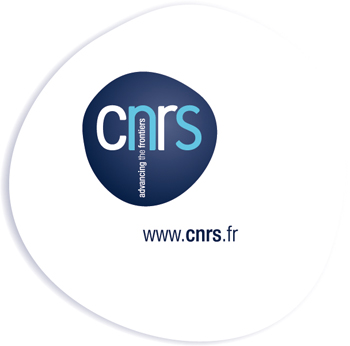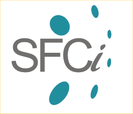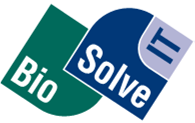| P-1 |
A. J. M. Barbosa, F. Caporuscio, G. Mangiatordi, G. Rastelli, A. Del Rio |
|
CoCoCo: a freely available multiconformational database of commercial compounds for HTVS purposes. Application to the FXR nuclear receptor |
| P-2 |
C. D. Fjell, H. Jenssen, W. A. Cheung, R. E. W. Hancock and A. Cherkasov |
|
Cheminformatics Optimization of Antibacterial Peptides using Genetic Algorithm |
| P-3 |
F. Chevillard |
|
Beyond measuring the performances of ligand-based methods for back-screening selections |
| P-4 |
G.-Yu Chuang, D. Rognan |
|
Hs-Pharm-Gen: An Automated Tool For Generating Receptor-Based Pharmacophores From Ligand-Free Protein Structures |
| P-5 |
K. Hasegawa, T. Fukami, M. Ohta, Y. Shiratori |
|
Construction of ADMET local models and development of Web GUI for chemists |
| P-6 |
F. Dulin, M. Pierre Halm, A. Lepailleur, R. Bureau, S. Rault |
|
Prediction of pesticides toxicity to bees: database construction and QSAR studies |
| P-7 |
N. Dupont, J. Pérard-Viret, E. Migianu-Griffoni, M. Monteil |
|
Ligand based and structure based in-silico optimisation and design of αvβ3 integrin ligands for detection of integrin overexpression in tumor cells by a new MRI nanoplatform |
| P-8 |
D. Fourches, E. Muratov, A. Tropsha |
|
Trust, but verify: On the importance of chemical structure curation in cheminformatics and QSAR modeling research |
| P-9 |
C. Gaudin, E. Ivanoff G. Maurin, D. Paula de Cuhna, P. Horcajada, C. Serre |
|
Quantitative Structure Activity Relationship of metal-organic frameworks as potential nanocarriers for drug encapsulation and delivery |
| P-10 |
C. Coiffier, E. Henon, P. Goekjian A. Haudrechy |
|
Top-down approach for research of new biologically active substrates:
Analysis of preferred conformations of C-pentosides |
| P-11 |
J. Desaphy, D. Rognan |
|
Predicting binding site similarity from pharmacophore-annotated cavity shapes |
| P-12 |
A. Kooistra, T. W. Binsl, C. de Graaf, J. H. G. M. van Beek, J. Heringa |
|
EDprints: improved virtual screening using assembled information of electron density |
| P-13 |
S. R. Langdon, N. Brown, J. Blagg |
|
The scaffold diversity of exemplified medicinal chemistry space |
| P-14 |
J. Graton, J.-Y. Le Questel, C. Laurence |
|
The pKBHX Database: Towards a Better Understanding of Hydrogen-Bond Basicity |
| P-15 |
A. Lepailleur, S. Lemaître, X. Feng, J. Sopkova-de Oliveira Santos, P. Delagrange, J. Boutin, P. Renard, R. Bureau, S. Rault |
|
Novel 2,2′-Bithienyl Derivatives as Non-Peptidic AANAT inhibitors : a Computational Approach from Hit Discovery to Lead Optimization |
| P-16 |
E. Leproult, D. Moras, J.-M. Wurtz |
|
Design of highly selective covalent kinase inhibitors |
| P-17 |
Yann Lienhart |
|
Magellan: a database application to store and help the analysis of mass spectrometry and gas chromatography data |
| P-18 |
K. Loving, N. Salam, W. S. Schrödinger |
|
Computational Tools For Fragment-Based Drug Discovery |
| P-19 |
S. Lozano, M.-P. Halm-Lemeille, A. Lepailleur, R. Bureau, S. Rault |
|
Genetic algorithm and consensus QSAR: application to acute toxicity
in fish |
| P-20 |
J. Meslamani, D. Rognan |
|
Predicting Ligand-Protein Binding Using Svm: A Novel Chemogenomic Screening Method |
| P-21 |
P. Muller, V. Vivat, D. Roecklin, M. Uhirng, P. Ciapetti, D. Zeyer |
|
HSP90 inhibitors: hit finding using Molecular Interaction Fingerprint and non-covalent ESI-MS screening |
| P-22 |
E. N. Muratov, D. Fourches, A. G. Artemenko, V. E. Kuz’min, G. Zhao, A. Golbraikh, P. G. Polischuk, E. V. Varlamova, I. I. Baskin, V. A. Palyulin, N. S. Zefirov, L. Jiazhong, P. Gramatica, T. Martin, F. Hormozdiari, P. Dao, C. Sahinalp, A. Cherkasov, T. Oberg, R. Todeschini, V. Poroikov, A. Zaharov, A. Lagunin, D. Filimonov, A. Varnek, D. Horvath, G. Marcou, C. Muller, L. Xi, H. Liu, X. Yao, K. Hansen, T. Schroeter, K.-R. Muller, I. Tetko, I. Sushko, S. Novotarskyi, J. Reed, J. Barnes, A. Tropsha |
|
Combi-QSAR Modeling of Ames Mutagenicity |
| P-23 |
B. Plainchont, J.-M. Nuzillard
V. De Paulo Emerenciano |
|
Recent developments of LSD, an automatic structure elucidation software |
| P-24 |
M. Nuzillard, A. Haudrechy |
|
Quiral: a Computer Program for the Synthesis of Chiral Molecules from Sugars |
| P-25 |
S.Pérot, C.Reynes, O.Sperandio, M.Miteva, B.Villoutreix, A-C.Camproux |
|
Anatomy of druggable pockets and associated ligands |
| P-26 |
V. Ramachandran, G. Hansen, R. Hilgenfeld |
|
Targeting Mip proteins for the development of new antibacterials |
| P-27 |
L. Colliandre, A. Ahmed-Belkacem, C. Hurard, C. Roumestand, D.Douguet, W. Bourguet, G. Labesse, J.-M. Pawlotsly, J.-F. Guichou |
|
Implementation and application of a fragment-based screening approach to find news humans cyclophilins inhibitors |
| P-28 |
M. P. A. Sanders, J. P. G. Klomp and J. de Vlieg |
|
Sequence based residue selection and the application in drug design |
| P-29 |
E. Varlamova , E. Muratov, A. G. Artemenko , V.E. Kuz’min, L. Nikolaeva-Glomb, A. S. Galabov |
|
QSAR modeling of poliovirus replication inhibition by mixtures of antivirals |
| P-30 |
P. Vayer, A.Arrault, M. Bertrand |
|
ChemoMining approach of the management of pharmaceutical screening projects |
| P-31 |
M. Wirth, W. Sauer, O. Michielin |
|
Do Ligands of different Drug Targets show specific Molecular Shapes? |
| P-32 |
G. Wissel, H. Xhaard |
|
Molecular modeling of antagonist binding at the α2 Adrenoceptors |
| P-33 |
Y. Yamanishi |
|
Drug-target interaction prediction from chemical, genomic and pharmacological data in an integrated framework |
| P-34 |
J. Maupetit, B.Villoutreix, P. Tufféry |
|
3D Printing Service @ RPBS - MTi |
| P-35 |
N. Chitranshi, S. Gupta, P. K. Trpathi |
|
Computational Studies of Huntingtin protein: Classification and Binding Pattern Determination |
| P-36 |
M. Stahl |
|
Exploring Local Shape Space with Fragment Replacement |
| P-37 |
C. Muller, G. Marcou, A. Varnek |
|
Predictive models to detect incorrect a tom-atom mapping of reactions using condensed graph of reactions |
| P-38 |
A. de Luca, G. Marcou, D. Horvath, A. Varnek |
|
Recognition of different classes of reactions using condensed graphs of reactions |
| P-39 |
I. Oprisiu , G. Marcou, A. Varnek, E. Varlamova, E. Muratov, V. Kuzmin |
|
Modeling of phase diagrams |
| P-40 |
D. Horvath, C. Chira |
|
Simplified Chain Folding Models as Metaheuristic Benchmark for Tuning
Real Protein Folding Algorithms? |
| P-41 |
B. Wendt |
|
Capturing SAR-trends from chemogenomical spaces |
| P-42 |
V. Le Guilloux, G. Guenegou, S. Bourg, J. Dubois-Chevalier, L. Morin-Allory, L. Colliandre |
|
Implementation of a Reference “Chemical Space” for HTS Commercial Compounds: Application to the Comparison of Chemicals Libraries. |













